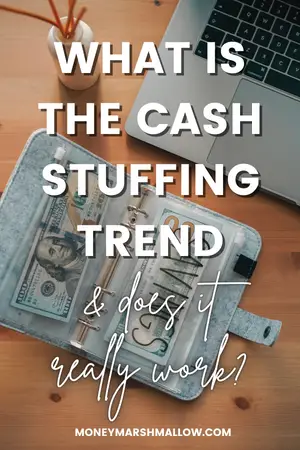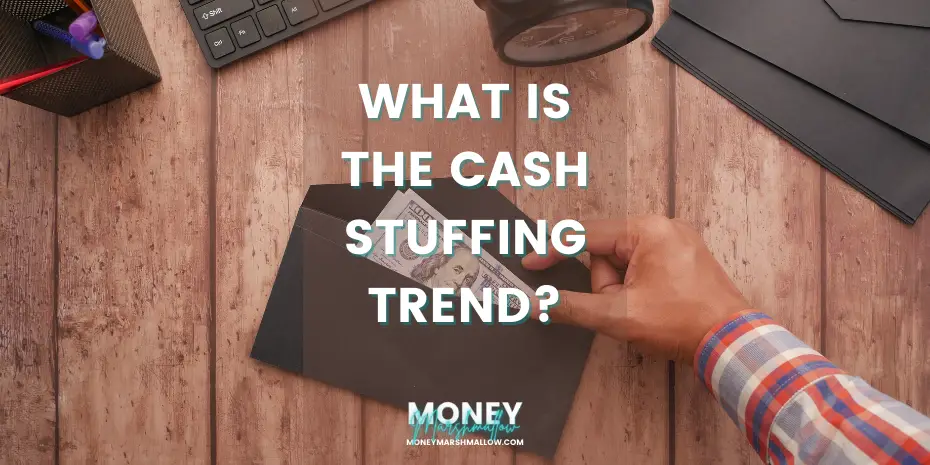Feeling overwhelmed by digital spending? Longing for a simpler way to manage your money? Cash stuffing, the popular “envelope system” reborn on TikTok, might be the answer. This budgeting method involves dividing your money into labelled envelopes for expenses like groceries and entertainment. This tangible approach can help you visualise your spending limits, curb impulsive purchases, and gain control over your finances.
But is cash stuffing just a flashy money trend or an effective budgeting tool? Let’s explore what cash stuffing is, its pros and cons, and a step-by-step guide to this envelope budgeting method.
What is cash stuffing?
Cash stuffing is a budgeting method that involves withdrawing your spending money and dividing it into labelled envelopes for different expense categories, like travel, groceries, entertainment, and savings. You then use the cash in each envelope for its designated category throughout the month.
Think of this cash envelope method as a physical manifestation of your budget. Instead of tracking numbers on a screen, you see your spending limits right in front of you, in the form of crisp bills nestled in each envelope.
Pros and cons of cash stuffing
So, you’re intrigued by the tactile approach of cash stuffing? Before diving headfirst into this budgeting method, let’s take a balanced look at its upsides and downsides:
| Cash stuffing: Pros | Cash stuffing: Cons |
| Emphasis on budgeting: Promotes creating and sticking to a budget, leading to better financial management. | Planning and prep required: Setting up the system and managing envelopes needs effort. |
| Transparency of spending: Visualises expenses throughout the month, aiding understanding and potential changes. | The inconvenience of carrying cash: Carrying envelopes and cash might not be ideal for everyone. |
| Reduced reliance on credit: Encourages using cash rather than cards, potentially preventing debt and fees. | Risk of loss: Carrying or storing cash carries the risk of theft or loss. |
| Simplicity: Straightforward to implement, no complex apps or calculations needed. | Limited flexibility: Adjusting budgets can be tricky after allocating cash. |
| Potential overspending: Some might overspend in certain categories to compensate for perceived abundance in others. | Reduced potential interest: Keeping money in envelopes means missing out on savings account interest. |
| No spending alerts: No automatic notifications like with digital methods to warn about reaching spending limits. | Not practical for fixed expenses: Fixed bills like rent, utilities and student loans will often need to be paid digitally. |
| Loss of potential rewards: Paying with cash means missing out on credit card points or cashback benefits. |

How to do cash stuffing or cash envelope budgeting
If you are interested in trying out cash stuffing to get your spending in control is control, here are five simple steps to start. But before getting started with cash envelope budgeting, you will need:
- A pen and paper (or budgeting app): To map out your financial landscape and create your budget.
- Envelopes (or clear containers): One for each spending category you want to track.
- Markers or labels: To clearly identify each envelope’s purpose.
- Your income statements and bills: To understand your incoming and outgoing money.
- Motivation and commitment: Consistency is key to making cash stuffing work.
1. Set your budget
Before stuffing envelopes, map out your finances. Assess your monthly income, essential expenses (rent, groceries, bills), debt payments, and desired savings goals. Use a budgeting app, online tools or a simple spreadsheet to track everything.
2. Label your envelopes
Now grab some envelopes (or containers) and unleash your creativity! Write clear labels for each spending category. Start with essentials like “food” and “commute,” then add fun categories like “entertainment” or “travel” if your budget allows this. Or you could get more detailed with separate envelopes for “groceries” and “eating out,” instead of just “food.”
3. Stuff your envelopes
At the start of each month, withdraw your budgeted cash and fill your envelopes accordingly. Remember, allocate specific amounts based on your budget, not equal piles. Leftover cash in one envelope doesn’t mean overspending in another! Instead, consider saving or investing any extra according to your financial goals.
4. Take cash out of your envelopes
Throughout the month, use only the cash from the designated envelope for its corresponding expense. Treat it like your spending limit – visual reminders are powerful! Keep some cash with you when shopping or use designated “cash wallets” for extra portability.
5. Check in and adapt
Remember to assess your envelope levels regularly. Are you seeing a near-empty food envelope before the month ends? Time to tighten your belt! The goal is to avoid borrowing from other envelopes or hitting the ATM again. If adjustments are needed, tweak your budget next month, and keep stuffing!
How to do cash stuffing: Bonus tips
Once you have your cash envelope system set up, here are some additional tips to make your cash stuffing journey more engaging and effective:
- Start with larger spending categories first, adding more envelopes as you get comfortable.
- Decorate your envelopes to make them visually appealing and motivating.
- Consider tracking your envelope balances in a dedicated notebook or app.
- Embrace cash stuffing as a tool to learn your spending habits and gain financial confidence!
Alternatives to cash stuffing
While cash stuffing can be an effective budgeting tool for some, it’s not the only option for individuals seeking to manage their finances effectively. Here are some alternatives to cash envelopes you can explore:
1. Kakeibo budgeting method: Inspired by Japanese tradition, Kakeibo offers similar benefits to cash stuffing, but through a more flexible approach, without the need for physical envelopes or cash. With this method, you track your income, expenses, and progress in a dedicated notebook. Kakeibo also encourages regular budget check-ins and adjustments, prioritising mindful spending and reflection.
2. Digital budgeting tools: Embrace the convenience of technology with budgeting apps like Monzo’s “Pots” or Starling’s “Goals.” These apps mimic the envelope system electronically, allowing you to set spending limits and track expenses within designated categories. You can even automate transfers for effortless budgeting.
3. The 50/30/20 rule: This straightforward rule allocates 50% of your income to essential needs (housing, bills), 30% to desired items and experiences (entertainment, dining), and 20% to savings and debt repayment. This simple framework creates a balanced budget foundation.
These alternative budgeting methods offer various benefits, from the convenience of digital tools to the mindfulness of the Kakeibo method. Explore these options, research further, and discover which method unlocks your financial confidence and paves the way for financial success.
Conclusion: Is cash stuffing a good idea?
Whether cash stuffing is a good idea for you depends entirely on your personality, financial situation, and goals. It offers several benefits, like increased mindfulness, reduced reliance on credit, and improved budgeting skills. However, it also comes with drawbacks, such as the inconvenience of carrying cash and the loss of earning potential interest.
Ultimately, the best budgeting method is the one that works best for you. If you’re disciplined and enjoy the tactile experience of handling cash, cash stuffing could be a great option. However, if you prefer convenience and digital tools, or are prone to overspending, other methods might be better suited.
Experiment with different methods and find what helps you manage your finances effectively and reach your financial goals. Remember, the key is to be consistent and proactive in your approach to financial success.

